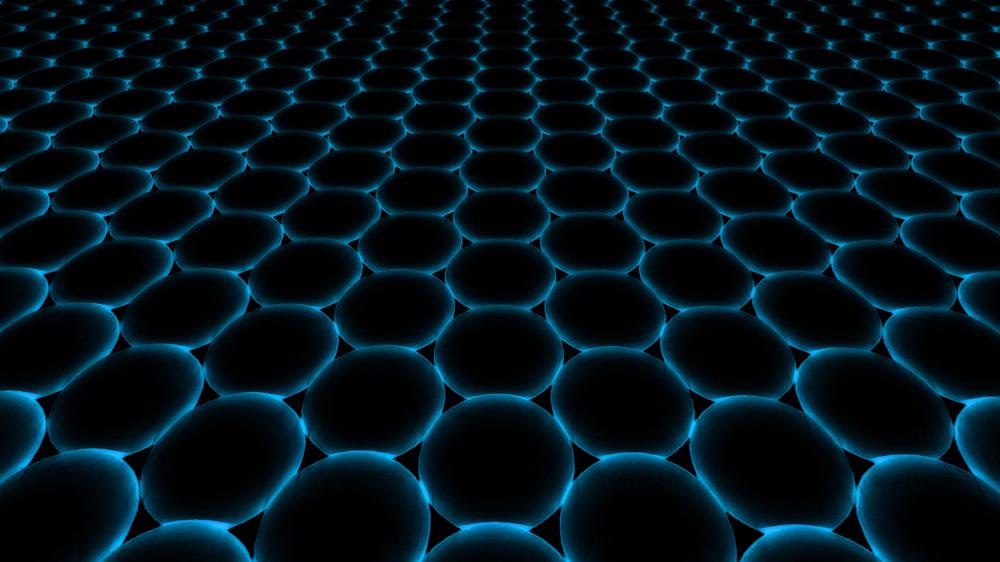
Image Credit: GiroScience/Shutterstock.com
Research has demonstrated the potential use for carbon quantum dots (CQDs) in next-generation LEDs and display systems. In December 2020, a team of researchers from the Institute of Solid State Physics of the Hefei Institutes of Physical Science (HFIPS), alongside those at the Southwest University in Chongqing, led by HFIPS’s Prof. XU Wen, published their research in the journal Carbon. The paper outlined how they had studied the optoelectronic properties of fluorescent carbon quantum dots (FCQDs) using Terahertz time-domain spectroscopy (THz TDS). The team was able to determine the optical conductance and key sample parameters and examine temperature dependence.
The team’s findings have furthered our knowledge of the fundamental physical properties of FCQDs, which will likely facilitate further development of FCQDs in numerous applications.
The Unique Properties of Carbon Quantum Dots
Carbon quantum dots are constructed from tiny carbon nanoparticles measuring less than 10 nm. CQDS are relatively new, having first been obtained back in 2004 via the purification of single-walled carbon nanotubes and then again in 2006 via laser ablation of graphite powder.
Initially, it was assumed that carbon has low solubility in water and has a weak fluorescence. Since it was discovered that CQDs have good solubility and strong luminescence, much work has been conducted to understand more about their properties.
Since their initial emergence in 2004, CQDs have rapidly become a particular research focus. Knowledge mounted on their unique optical and optoelectronic properties, and scientists have discovered their use in various applications.
The materials used to make CQDs can be found in abundance, are relatively cheap to make and are environmentally friendly. For these reasons, scientists have been striving to learn more about the nature of CQDs so that they can be used to replace older, less efficient, more expensive, and environmentally harmful materials in a wide range of technologies.
Developing our knowledge of CQDs is vital to their development in potential applications such as bioimaging, biosensors, and biomolecule/drug delivery. Their excellent electronic properties also suggest their possible use as electron donors and acceptors, or within optronics, catalysis, and sensors, due to their chemiluminescence and electrochemical luminescence.
Exploring Dry FCQDs with THz TDS
Given CQDs' properties, scientists presume that fluorescent CQDs should be used in a solid-state to realize their applications in next-generation lighting and displays.
To investigate fluorescent carbon quantum dots’ (FQCDs) optoelectronic properties, the joint team from HFIPS and the Southwest University prepared two types of FCQDs to study. One which could emit blue light ((B-CQDs), and one which could emit red light (R-CQDs) when prepared in solutions under optical excitation.
The team investigated the THz optoelectronic response of the dry B-CQDs and R-CQDs within a temperature range of 80 to 280 K. Their results showed that, under these parameters, the R-QCDs acted as an optical insulated when exposed to the 0.2—1.2 THz range. They also found that as the THz radiation frequency and temperature increased, the B-CQDs transitioned from insulator to semiconductor. The THz transmittance spectra collected by the team allowed them to decipher the optical conductance and key physical parameters of the FCQDs.
The team highlighted the significance of their findings, explaining that their results demonstrate the mechanisms and fundamental physical properties of FCQDs. This advancement in understanding will likely facilitate the development of CQDs in materials used for next-generation LEDs and display systems.
Future Development of Carbon Quantum Dots
The research was the very first to apply THz TDS in the exploration of dry CQDs. Given the value of the results that the research produced, it is likely that further research projects will focus on the investigation of dry CQDs with THz TDS. Many science fields may be impacted by this cutting-edge research, such as optics and electrics, biomedical and pharmaceuticals, and clean energy.
More research is needed before FCQDs can reach their full potential. Scientists must gather more evidence on the optical properties of FCQDs and how their physical form impacts function. Further information on how FCQDs interact with other materials is also required before FCQDs can be used in all the potential applications that they have been imagined for. While the current research adds significant value to our understanding of FCQDs, it will likely be several years before their potential is reached.
References and Further Reading
Ghosh, D., Sarkar, K., Devi, P., Kim, K. and Kumar, P., 2021. Current and future perspectives of carbon and graphene quantum dots: From synthesis to strategy for building optoelectronic and energy devices. Renewable and Sustainable Energy Reviews, 135, p.110391. https://www.sciencedirect.com/science/article/pii/S1364032120306791
Scientists discover insulator-to-semiconductor transition in fluorescent carbon quantum dots. phys.org. https://phys.org/news/2020-12-scientists-insulator-to-semiconductor-transition-fluorescent-carbon.html
Song, D., Tian, J., Xu, W., Wen, H., Wang, C., Tang, J., Zhang, J. and Guo, M., 2020. Optically induced insulator-to-semiconductor transition in fluorescent carbon quantum dots measured by terahertz time-domain spectroscopy. Carbon. https://www.sciencedirect.com/science/article/abs/pii/S0008622320311544?via%3Dihub
Wang, Y. and Hu, A., 2014. Carbon quantum dots: synthesis, properties and applications. Journal of Materials Chemistry C, 2(34), p.6921. https://pubs.rsc.org/en/content/articlelanding/2014/tc/c4tc00988f#!divAbstract
Disclaimer: The views expressed here are those of the author expressed in their private capacity and do not necessarily represent the views of AZoM.com Limited T/A AZoNetwork the owner and operator of this website. This disclaimer forms part of the Terms and conditions of use of this website.